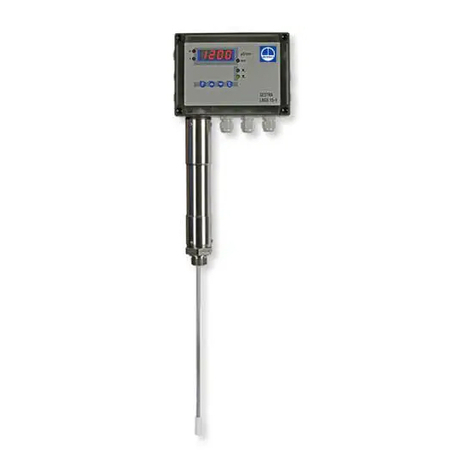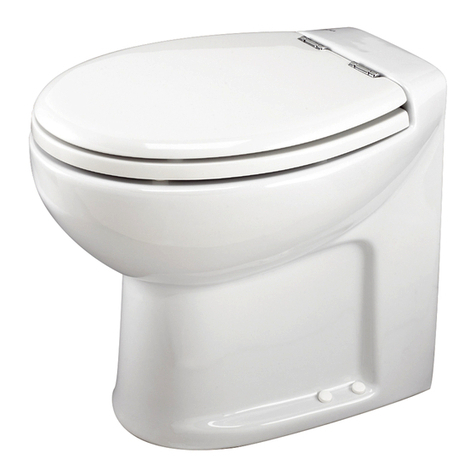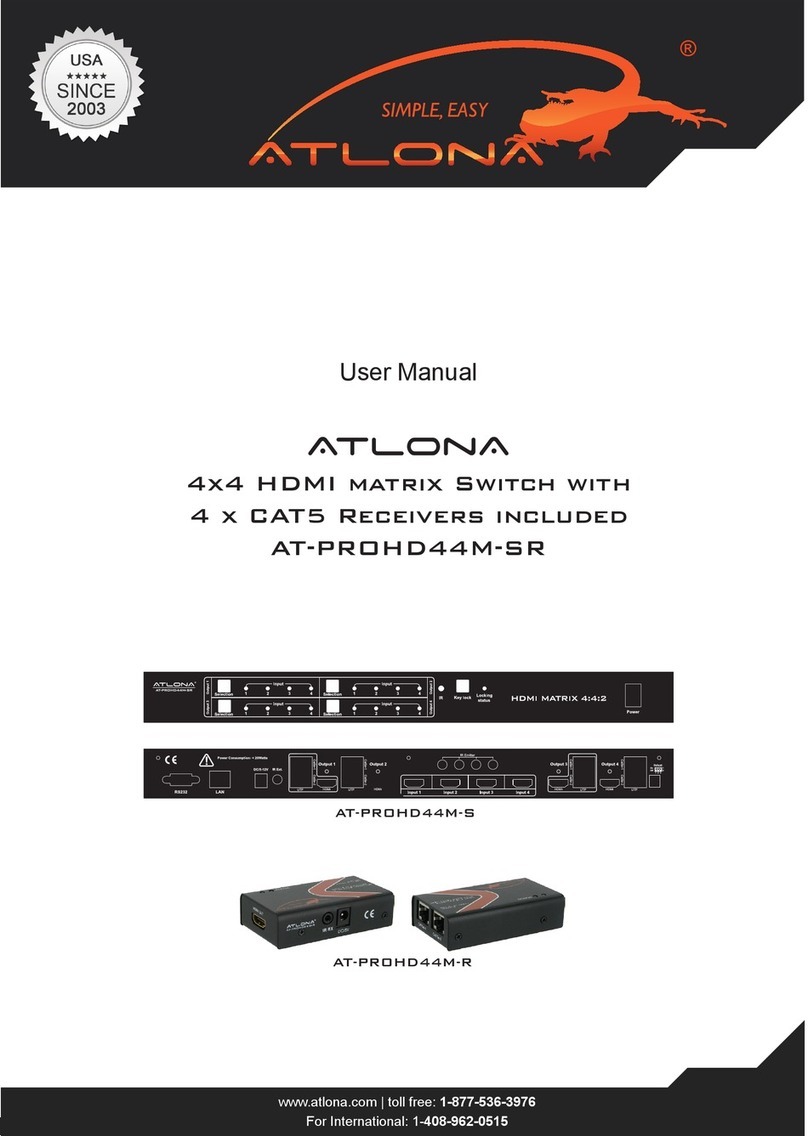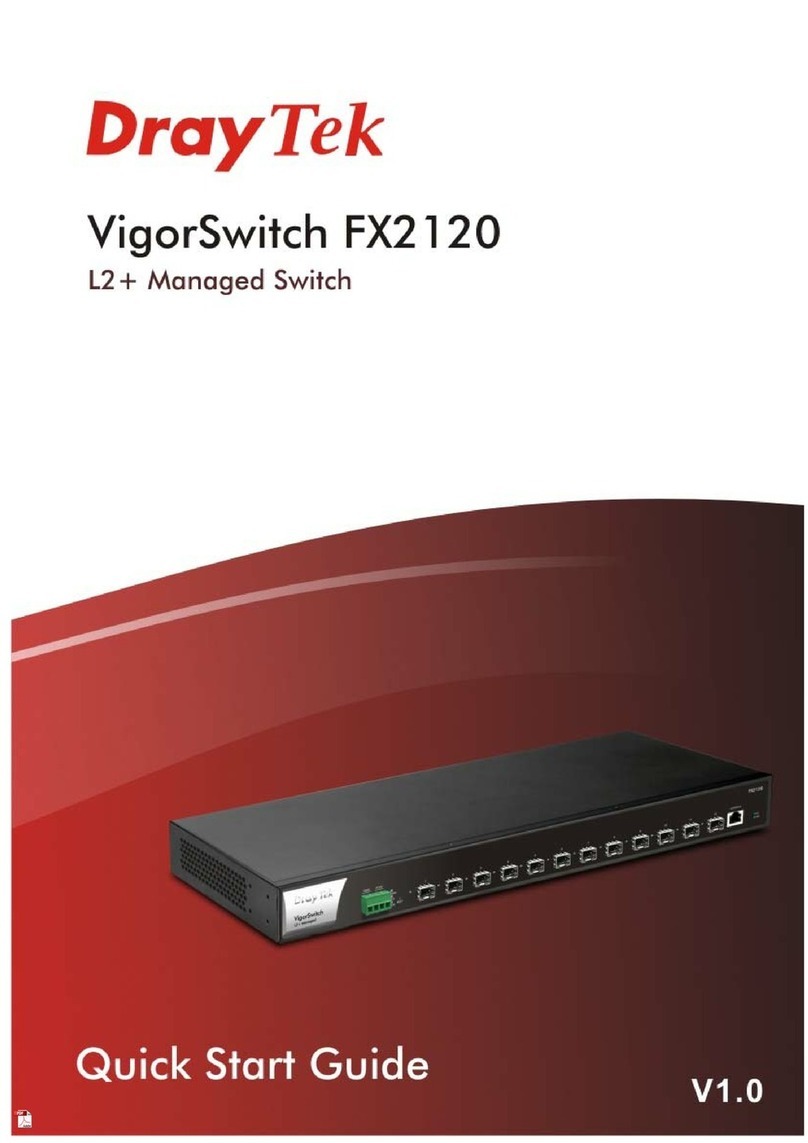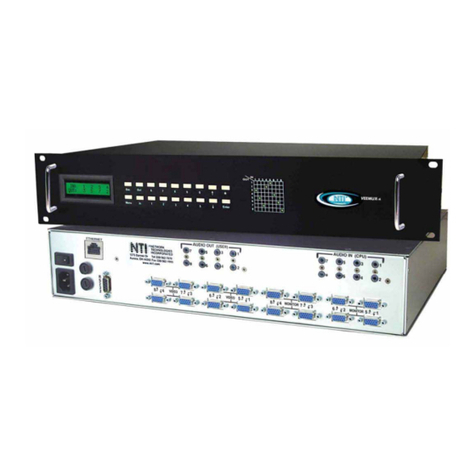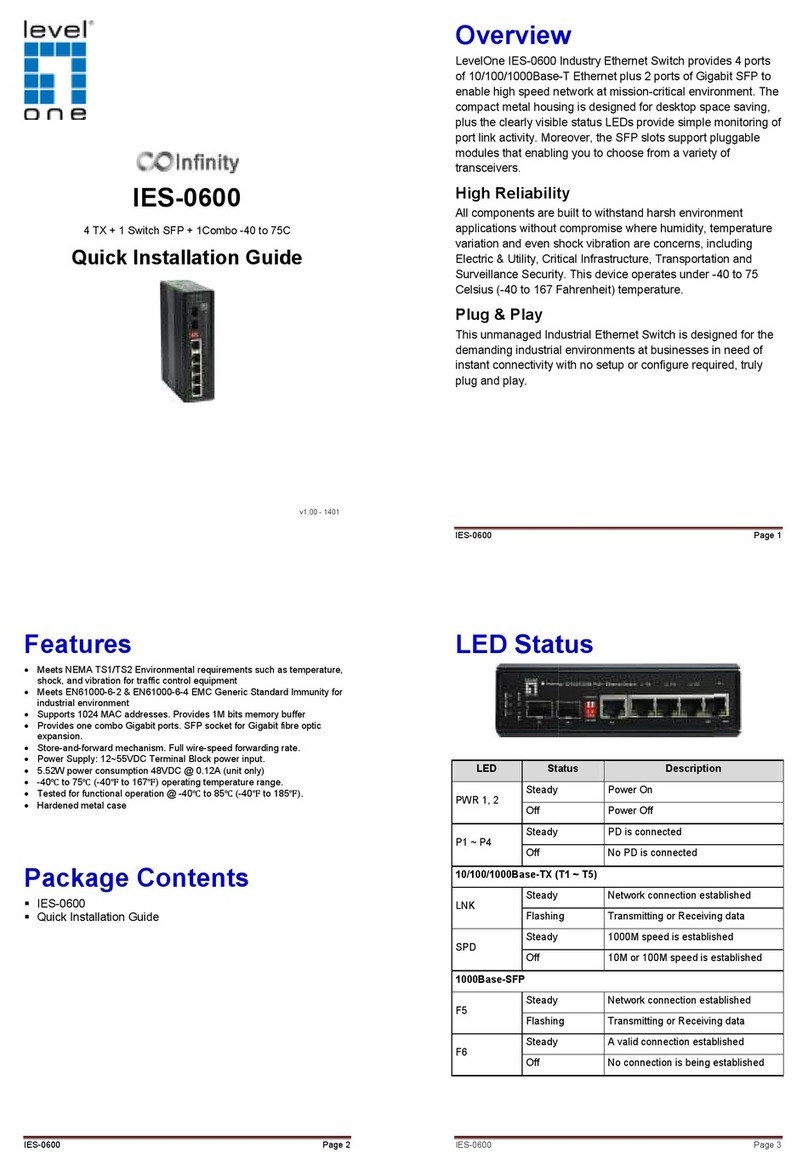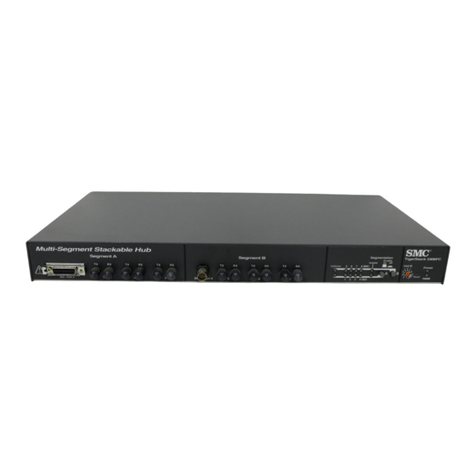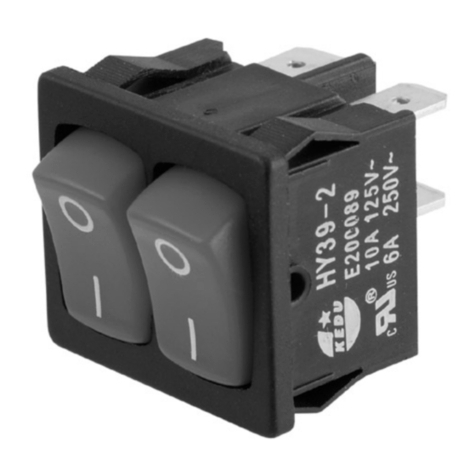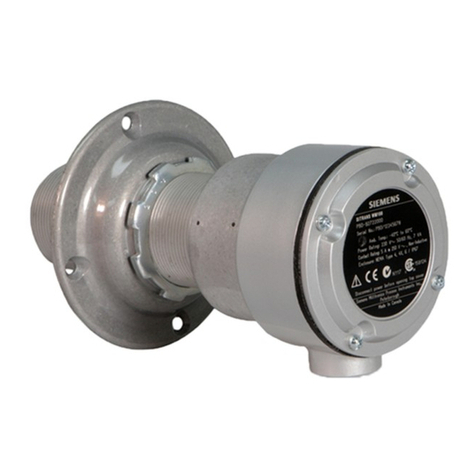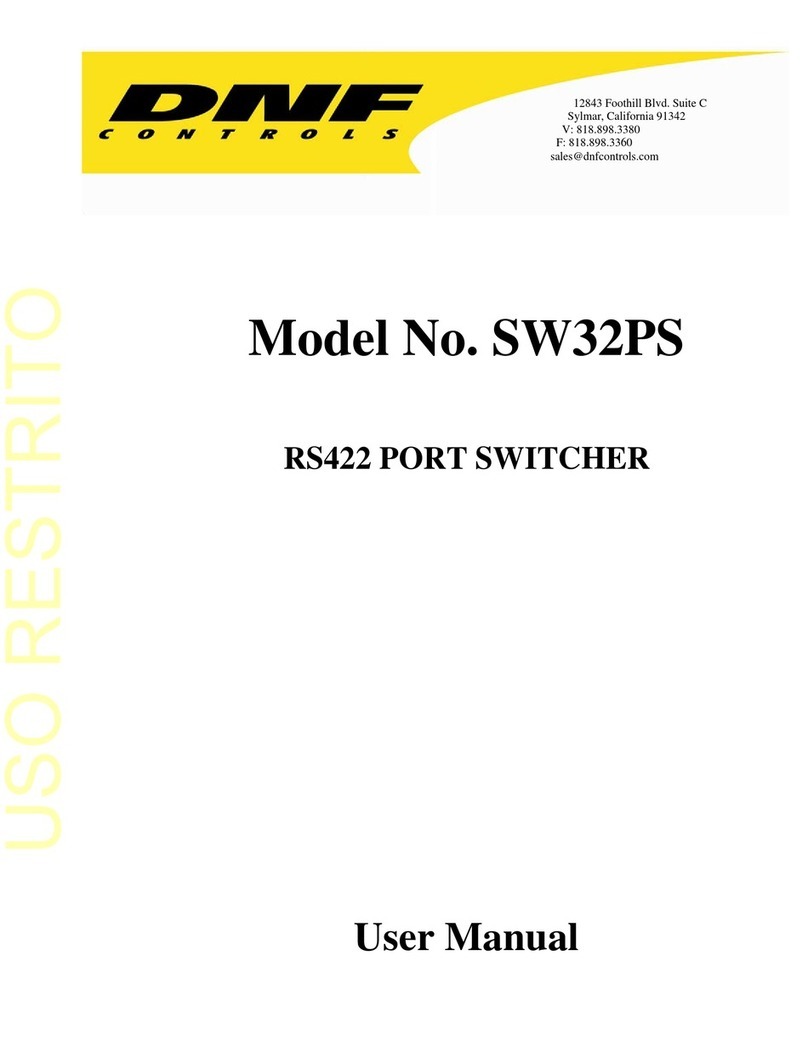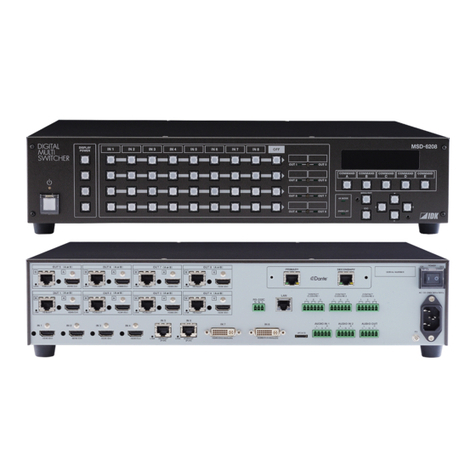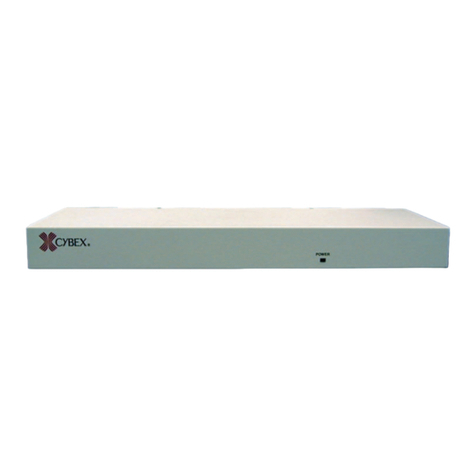GESTRA NRGS 15-1 User manual

1
EN
English
Level switch
NRGS 15-1
Original Installation Instructions
818479-04

2
Contents
Page
Important notes
Usage for the intended purpose...............................................................................................................4
Function..................................................................................................................................................4
Safety note..............................................................................................................................................5
Directives and Standards
LV (Low Voltage) Directive and EMC (Electromagnetic Compatibility)........................................................6
ATEX (Hazardous Area) ............................................................................................................................6
UL/cUL (CSA) Approval ............................................................................................................................6
Note on the Declaration of Conformity / Manufacturer's Declaration ..................................................6
Technical Data
Level switch NRGS 15-1 .........................................................................................................................7
Scope of supply ......................................................................................................................................8
Name plate / marking .............................................................................................................................9
Dimensions...........................................................................................................................................10
Establishing Functions
Selecting function .................................................................................................................................11
Level switch NRGS 15-1 .......................................................................................................................12
Establishing functions ...........................................................................................................................13
Changing the time delay........................................................................................................................13
Key .......................................................................................................................................................13
Adjusting sensitivity range.....................................................................................................................14
Installation
Tools .....................................................................................................................................................15
NRGS 15-1............................................................................................................................................16
NRGS 15-1, step 1 ................................................................................................................................17
NRGS 15-1, step 2 ................................................................................................................................17
Table "Functions"..................................................................................................................................17
Key .......................................................................................................................................................17
Examples of installation ........................................................................................................................18
Key .......................................................................................................................................................18

3
Contents
Page
- continued -
Electrical connection
Level switch NRGS 15-1 .......................................................................................................................19
Connecting level switch NRGS 15-1 .....................................................................................................19
Wiring diagram .....................................................................................................................................20
Tools .....................................................................................................................................................20
Commissioning procedure
Checking electrical connection..............................................................................................................21
Applying supply voltage.........................................................................................................................21
Checking switchpoints and functions ....................................................................................................21
Checking switchpoints and functions ....................................................................................................22
Checking switchpoints and functions ....................................................................................................23
Troubleshooting
Indication, diagnosis and remedy ..........................................................................................................24
Indication, diagnosis and remedy ..........................................................................................................25
Replacing electronic module .................................................................................................................25
Removing and disposing of the level switch
Removing and disposing of the level switch ..........................................................................................26
Annex
Adjust other functions ...........................................................................................................................27
Installation in non-metallic vessel..........................................................................................................27

4
Important notes
Usage for the intended purpose
The level switch NRGS 15-1 is designed for detecting and signalling four different liquid levels and
works for instance in condensate and feedwater tanks, steam boilers and (pressurised) hot-water in-
stallations as water level and switching controller with MIN and MAX alarm.
Function
The level switch NRGS 15-1 is a complete package consisting of a four-tipped level electrode and an
integrated level switching controller. The equipment works only with water having a min. electrical con-
ductivity of > 0.5 μS/cm at 25°C.
A switching channel with time delay, an output relay and a signal LED are assigned to each electrode
tip.
The functions of the switching channels 1 and 4 are fixed, the switchting channels 2 and 3 can be ad-
justed via code switch to suit individual requirements. The tips of the electrode are cut to length on site
in order to establish the desired switchpoints of the associated switching channels.
The following functions are possible:
nElectrode rod 1 exposed / switching channel 1 energizes relay 1 = low level 1 with optional perfor-
mance test and lock-out function
nElectrode rod 2 exposed / switching channel 2 energizes relay 2 = low level 2
nElectrode rod 3 exposed or submerged / switching channel 3 energizes relay 3 in a time-controlled
way =timed pump control (fill/discharge control)
nElectrode rods 2 and 3 exposed or submerged / switching channel 3 energizes relay 3 = on/off pump
control (fill/discharge control)
nElectrode rod 4 submerged / switching channel 4 energizes relay 4 = high level

5
Danger
When loosening the level electrode steam or hot water might escape. This presents the
danger of severe scalds to the whole body.
Do NOT remove the level switch unless the boiler pressure is verified to be 0 bar.
The level switch becomes hot during operation.
Risk of severe burns to hands and arms.
Before carrying out installation and maintenance work make sure that the equipment is
cold.
The terminal strip of the level switch is live during operation.
This presents the danger of electric shock!
Always cut off power supply to the equipment before mounting, removing or connecting
the equipment and the terminal strips!
Safety note
The equipment must only be installed and commissioned by qualified and competent staff.
Retrofitting and maintenance work must only be performed by qualified staff who - through adequate
training - have achieved a recognised level of competence.
Important notes
The name plate specifies the technical features of the equipment. Do not commission or
operate any item of equipment that does not bear its specific name plate.
Attention
- continued -

6
ATEX (Hazardous Area)
LV (Low Voltage) Directive and EMC (Electromagnetic Compatibility)
The equipment meets the requirements of the Low Voltage Directive 2014/68/EU and the EMC
Directive 2014/30/EU.
According to the European Directive 2014/34/EC the equipment must not be used in
explosion-risk areas.
Note on the Declaration of Conformity / Manufacturer's Declaration
For details on the conformity of our equipment with European Directives, please refer to our
Declaration of Conformity or our Manufacturer's Declaration.
The current Declaration of Conformity / Declaration of Manufacturer are available in the Internet under
www.gestra.de/documents or can be requested from us.
Directives and Standards
The equipment complies with the requirements of the following standards: UL 508 and CSA C22.2 No.
14-13, Standards for Industrial Control Equipment. File E243189.
UL/cUL (CSA) Approval

7
Level switch NRGS 15-1
Technical Data
Service pressure
PN 25, 25 bar at 224°C
Mechanical connection
Screwed G 1A, ISO 228
Materials
Screw-in body: 1.4571, CrNiMoTi17-12-2 or 1.4404, A 470 316L for NPT thread
Electrode rods: 1.4571, CrNiMoTi17-12-2
Insulation of electrode rod:
PTFE
Spacer disc: PTFE
Terminal box: Polycarbonate
Electrode rods
Length supplied: 1000 mm
Diameter: 5 mm
Supply voltage
220 – 240 V +10/–15 %, 50/60 Hz
110 – 120 V +10/–15 %, 50/60 Hz (optional)
24 V +10/–15 %, 50/60 Hz (optional)
Power consumption
3 VA
Fuse
external 63 mA, slow blow, at 230 V,
external 125 mA, slow blow, at 115 V,
external 1 A, slow blow, at 24 V.
Response sensitivity (Electrical conductivity of water at 25°C)
> 0.5 ... < 1000 μS/cm or > 10 ... < 10000 μS/cm (switch-selectable)
Electrode voltage
20 Vss
Output
4 volt-free change-over contacts,
8 A 250 V AC / 30 V DC cos ϕ= 1 (IEC 61810)
Ensure interference suppression by providing contactor with an arc suppressor RC combination
Energizing /de-energizing delay
Relay 1 and 2: 1s, factory set
Relay 3: 0-30s, adjustable via potentiometer
Relay 4: 3s, factory set
Indicators and adjustors
3 red LEDs to indicate "Low level alarm 1 + 2 / High level".
1 yellow LED to indicate "Pump ON".
1 green LED to indicate "Power ON".
1 ten-pole code switch to select the sensitivity range and to establish the functions.
1 potentiometer for setting the time delay (0 to 30 s
1 test button in the terminal box to check the function of switching channel 1 (connected to terminals).
1 reset button in the terminal box to reset the lock-out function (connected to terminals).

8
Technical Data
Level switch NRGS 15-1
Cable entry / electrical connection
3 cable glands with integral cable clamps (M 16)
1 two-pole terminal strip for power supply.
1 twelve-pole terminal strip for connecting the control cables.
1 four-pole terminal strip for test and reset button.
Screw-type terminal strips, conductor size ≤ 1,5 mm2.
Protection
IP 65 to DIN EN 60529
Protection class
2 (completely insulated)
Ambient temperature
when system is switched on: 0° ... 70°C, during operation: –10 °C ... 70°C
Transport temperature
–20° ... +80°C (< 100 hours), defrosting time of the de-energized equipment before it can be put into
operation: 24 hours.
Storage temperature
–20° ... +70°C, defrosting time of the de-energized equipment before it can be put into operation:
24 hours.
Relative humidity
max. 95%, no moisture condensation
Weight
approx. 1.4 kg
Approvals
UL/cUL (CSA) approval UL 508 and CSA C22.2 No. 14-13, Standards for Industrial Control
Equipment. File E243189.
Scope of supply
NRGS 15-1
1 Level electrode with four tips
1 Terminal box with integrated level switch
1 Joint ring 33 x 39, form D, DIN 7603, made from 1.4301, bright annealed
1 Installation manual
or
NRGS 15-1
1 Level electrode with four tips
1 Terminal box with integrated level switch and built-in Test and Reset pushbutton
1 Joint ring 33 x 39, form D, DIN 7603, made from 1.4301, bright annealed
1 Installation manual
- continued -
- continued -

9
Protection
Manufacturer
Disposal note
De-energizing delay /
Response sensitivity
Service pressure/temperature
Safety note
Equipment designation
Name plate / marking
Fig. 1
Technical Data
Before removing cover, isolate from
power supplies. See installation
instructions!
Avant d'ouvrir le couvercle
dèconnecter complètement l'appareil.
Voir instructions de montage.
Vor Öffnen des Deckels, Gerät
freischalten! Betriebsanleitung
beachten!
250 V ~T2,5 A
100-120 VAC 50/60 Hz 3VA
Pmax
Tmax
NRGS 15-1
0-30 s 0,5 / 10 µS/cm
Niveauschalter
Level switch
Commutateur de niveau
GESTRA AG
Münchener Str.77
D-28215 Bremen
Phone:+49 (0) 421 / 3503-0
gestra.ag@flowserve.com
Tamb = 70°C (158 °F)
IP65
PN 25 G1 1.4571
25 bar (363psi)
224°C (435°F)
Mat.-Nr.: XXXXXX
Niveauschalter
Level switch
Commutateur de niveau
Before removing cover, isolate from
power supplies. See installation
instructions!
Avant d'ouvrir le couvercle
dèconnecter complètement l'appareil.
Voir instructions de montage.
Vor Öffnen des Deckels, Gerät
freischalten! Betriebsanleitung
beachten!
250 V ~T2,5 A
220-240 VAC 50/60 Hz 3VA
Pmax
Tmax
NRGS 15-1
0-30 s 0,5 / 10 µS/cm
GESTRA AG
Münchener Str.77
D-28215 Bremen
Phone:+49 (0) 421 / 3503-0
gestra.ag@flowserve.com
Tamb = 70°C (158 °F)
IP65
PN 25 G1 1.4571
25 bar (363psi)
224°C (435°F)
Mat.-Nr.: XXXXXX
Pressure rating, thread type,
material number
Electrical specification
Fuse for output contact
Max. admissible
ambient temperature
- continued -

10
4 3
A
Technical Data
Dimensions
180
357
1000
Fig. 2
b = 60
G 1A, ISO 228
130
∅42
- continued -

11
Selecting function
Before installing and commissioning the NRGS 15-1 ascertain the settings for the required functions.
Five functions are available:
Function 1
Default factory setting for equipment without pushbutton
Code switch
Toggle switch white
Electrode rod 1 Low level 1 / burner off
Electrode rod 2 Low level 2
Electrode rod 3 Timed pump control (fill control) tv = 0 – 30 s
Electrode rod 4 High water
Function 2
Default factory setting for equipment with pushbutton
Electrode rod 1 Low level 1 / burner off with test and reset button
Electrode rod 2 Low level 2
Electrode rod 3 Timed pump control (fill control) tv = 0 – 30 s
Electrode rod 4 High water
Function 3
Electrode rod 1 Low level alarm 1 / burner off
Electrode rod 2 Feed pump on (fill control)
Electrode rod 3 Feedwater pump off (tv = 0 s)
Electrode rod 4 High water
Function 4
Electrode rod 1 Low level alarm 1 / burner off with test and reset button
Electrode rod 2 Feed pump on (fill control)
Electrode rod 3 Feedwater pump off (tv = 0 s)
Electrode rod 4 High water
Function 5
Electrode rod 1 Low level alarm 1
Electrode rod 2 Pump off
Electrode rod 3 Pump on (discharge control) tv = 0 s
Electrode rod 4 High water
Establishing Functions
ON
1235
4678910
ON
1235
4678910
ON
1235
4678910
ON
1235
4678910
ON
1235
4678910
ON
1235
4678910
ON
1235
4678910
ON
1235
4678910
ON
1235
4678910
ON
1235
4678910
ON
1235
4678910
ON
1235
4678910
ON
1235
4678910
ON
1235
4678910
ON
1235
4678910
ON
1235
4678910
ON
1235
4678910

12
F
Fig. 3
Establishing Functions
Level switch NRGS 15-1
Fig. 4
7
65
§
"
890
!
()
%
$
&
/
1234
15s
0s
5s
25s
30s
20s10s
- continued -

13
Establishing Functions
Establishing functions
1. Set the code switch &to the desired function. For this purpose you can use a screwdriver with a
thin blade.
2. Use a waterproof marker to enter the established function for each electrode tip in the labelling
boxes on the lid (see Fig. 3).
Key
1LED 1 red
2LED 2 red
3LED 3 amber
4LED 4 red
5LED green for Power ON
6Terminal strip for control lines
7Cable gland 3 x M16 x 1,5
8Terminal strip for supply voltage
9Fixing screws for electronic module
0PE connection
!Fixing nut for terminal box
"Terminal lugs for electrode wires, functional earth
§RESET button
$Terminal strip for pushbuttons
%TEST button
&Code switch
/Potentiometer for time delay
(Cover screws (cross recess head screws M4)
)Housing cover
Note
To set the functions, the time delay and the response sensitivity open the terminal box.
To do so unscrew the cover screws (and remove the housing cover ).
After changing the settings replace the housing cover )and fasten the cover screws (.
Changing the time delay
The default time delay for the pump control is 5 seconds.
1. Turn the potentiometer knob /to the left or right to set a time delay between 0 and 30 seconds.
- continued -

14
Establishing Functions
Adjusting sensitivity range
The default factory setting for the response sensitivity is ≥ 10 μS/cm.
If the electrical conductivity of the boiler water is below 10 μS/cm at 25°C use the code switch &to
change the response sensitivity. To change the setting of the code switch &located on the
electronic
module (see Fig. 4) use a screwdriver with a thin blade.
The following sensitivity ranges are possible:
Code switch
Toggle switch white Sensitivity of response
Response sensitivity ≥ 0.5 μS/cm at 25°C
Response sensitivity ≥ 10 μS/cm at 25°C
(Factory setting)
ON
1235
4678910
ON
1235
4678910
- continued -

15
Note
nFor the approval of the boiler standpipe the relevant regulations must be considered.
nRefer to page 18 for typical installation examples.
nInstall the level switch only in a vertical position.
nThe seating surfaces of the standpipe or the flange provided on the vessel must be
accurately machined, Fig. 6!
nDo not bend electrode tips when mounting!
nDo not subject electrode tips to physical shocks.
nAt least 30 mm of the insulating tube must remain on the electrode tips.
nUse only the supplied joint ring!
33 x 39, form D, DIN 7603, 1.4301, bright annealed
nDo not lag electrode body above the hexagonal section!
nDo not lag the electrode body above the hexagonal part!
nNote that the max. thermal insulation of the boiler is 40 mm (see Fig. 5).
nDo not insulate electrode thread with hemp or PTFE tape!
nDo not apply conductive paste or grease to the electrode thread!
nMake sure that the air distance between the electrode tips and earth (flange, vessel
wall) is not less than 14 mm! Fig. 7, 8
nObserve the minimum distances for the installation of the electrode!
nThe specified torques must be strictly observed.
Attention
Tools
nOpen-end spanner A.F. 41, DIN 3110, ISO 3318
nScriber
nBolt cutter
nFlat file, medium cut 2 , DIN 7261, form A
nScrewdriver, size 2
nScrewdriver, size 2.5, completely insulated according to VDE 0680
Installation

16
4
3
21
A
B
=
Installation
Fig. 5
NRGS 15-1
Ra 3.2
0.5
∅40
bd
c
50
≥50
65 – 70
G 1A, ISO 228
Ra 12.5
Fig. 6
a
40
- continued -

17
1. Determine the measuring lengths of the electrode tips and enter the lengths in the table
"Functions".
2. Cut the electrode tips 1234 to lengths with a bolt cutter.
3. Deburr the end faces of the electrode tips.
4. Strip off 50 mm of PTFE insulation from the ends of the electrode tips. Make sure that the remaining
insulation is at least 30 mm long, measured from the lower edge of the screwed connection.
5. Position the PTFE spacer discs evenly to support the tips.
Installation
NRGS 15-1, step 1
jGasket
aThermal insulation, provided on site, d = 40 mm (outside of thermal insulation of steam boiler)
bScrewed G 1A, ISO 228
cJoint ring 33 x 39, form D, DIN 7603, 1.4301, bright annealed
dSeating surface
Key
Table "Functions"
6. Check the sealing surfaces. Fig. 6
7. Place supplied joint ring monto seating surface of the threaded standpipe or flange. Fig. 6
8. Apply a light smear of heat resistant silicone grease (e.g. WINIX® 2150) to electrode thread l.
9. Screw the level switch into the threads or flange and tighten with a 41 mm open-end spanner. The
torque required when cold is 160 Nm.
10. Insulate the boiler at the area where the level switch is installed, making sure that the thickness of
insulation does not exceed 40 mm (see Fig. 5).
NRGS 15-1, step 2
Electrode tip Function Wire/
connector Length [mm]
1 1
2 2
3 3
4 4
- continued -

18
Examples of installation
eFlange PN 40, DN 50, DIN EN 1092-01 or
flange PN 40, DN 100, DIN EN 1092-01
fFor the approval of the boiler standpipe with
connecting flange the relevant regulations
must be considered.
ge. g. reducer DIN 2616-2,
K-88.9 x 60.3 x 3.2 DIN 2616
hBoiler wall
iVent hole
Provide vent hole as close to the boiler wall as possible!
jElectrode distance 14 mm
(air gap and creepage distance)
uHigh water HW
vElectrode rods
Key
Installation
Fig. 7 Fig. 8
∅20
DN 50
e
f
v
w
x
y
∅20
≤90°
1"
i
u
≥10
2
∅20
DN 50
e
f
v
w
x
y
∅20
≤90°
1"
s
≥10
q
r
j
u
j
≥20
≥20
wProtection tube DN 80
xLow water LW
yReducer DIN 2616-2,
K-88.9 x 3.2-42.4 x 2.6 W
(Cover screws (cross recess head screws M4)
)Housing cover
6Terminal strip for control lines
7Cable gland 3 x M16 x 1,5
8Terminal strip for supply voltage
9Fixing screws for electronic module
0PE connection
!Fixing nut for terminal box
- continued -

19
Electrical connection
Level switch NRGS 15-1
A self-locking fixing nut §connects the terminal box to the electrode part. Before establishing the
electrical connection you can turn the terminal box through max. +/- 180° into the desired direction
(cable gland).
Aligning terminal box
1. Undo the cover screws (and remove the housing lid ). Fig. 3, 9
2. Detach the terminal strips 6and 8from the electronic module.
3. Strip off approx. 40 mm of cable insulation coating and remove approx. 5 mm of conductor end
insulation.
4. Loosen cable glands 7and run the mains cable through the lower cable gland and the control
cable through the upper cable gland.
5. Connect the mains and control cables according to the wiring diagram Fig. 11
(inside of housing lid) to the terminal strips 6and 8.
6. Plug the terminal strips 6and 8onto the electronic module.
7. Retighten the cable glands 7.
8. Put the housing lid )back on and fasten the cover screws(.
Connecting level switch NRGS 15-1
4
5
6
7
8
9
10
11
13
14
15
12
1
2
4
5
6
7
4
5
6
7
TR1
Fig. 9 Fig. 10
(
(
)
6
8
9
0
!
7

20
Tools
nScrewdriver, size 2
nScrewdriver, size 2.5, completely insulated according to VDE 0680
Electrical connection
Wiring diagram
Fig. 9
4
2
1
5
6
7
8
9
10
11
13
2
3
4
1
4
3
2
1
TEST
RESET
4
3
2
1
14
15
12
NL
4
Mains supply
Electrode
wires
PE connection S2
F1
S2 Disconnector
F1 Fuse for level switch
- continued -
Other manuals for NRGS 15-1
1
Table of contents
Other GESTRA Switch manuals
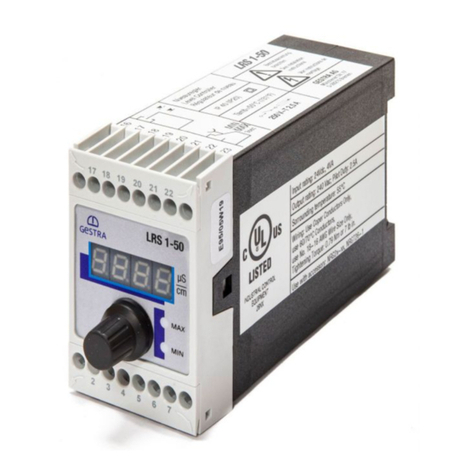
GESTRA
GESTRA LRS 1-50 User manual
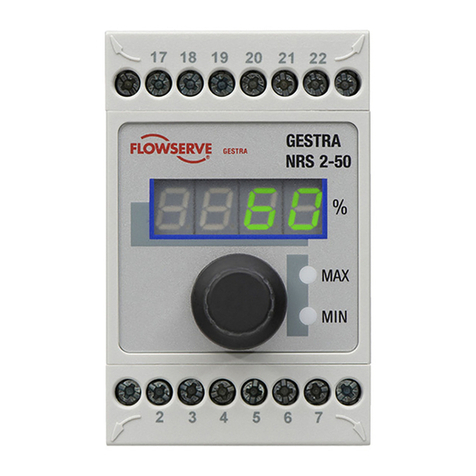
GESTRA
GESTRA NRS 2-50 User manual
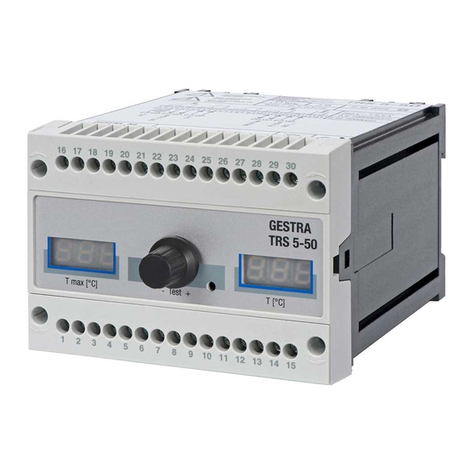
GESTRA
GESTRA TRS 5-50 User manual

GESTRA
GESTRA NRS 1-56 User manual

GESTRA
GESTRA URS 2 User manual

GESTRA
GESTRA NRS 1-41 User manual
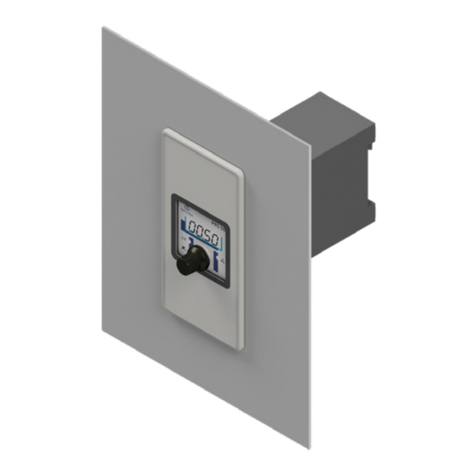
GESTRA
GESTRA TRS 5-52 User manual
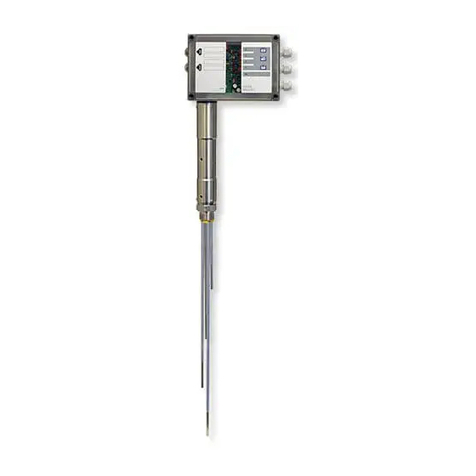
GESTRA
GESTRA NRGS 15-1 User manual
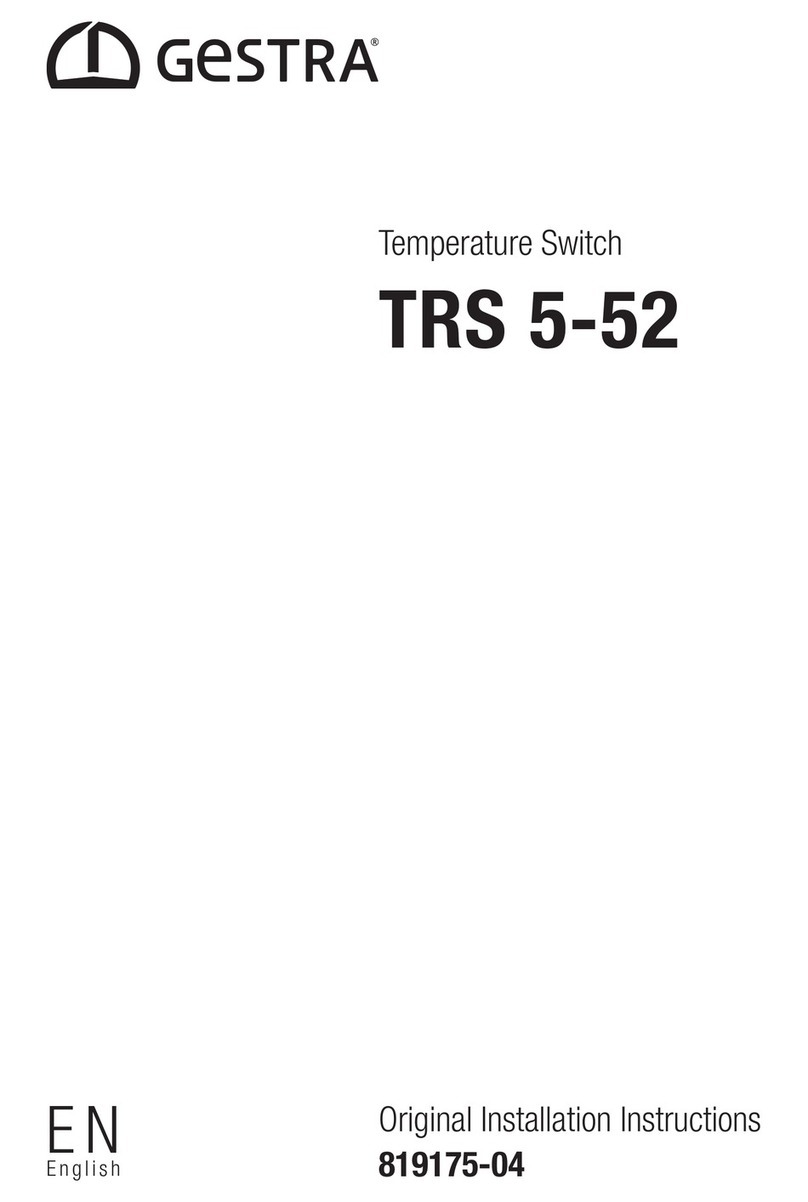
GESTRA
GESTRA TRS 5-52 User manual
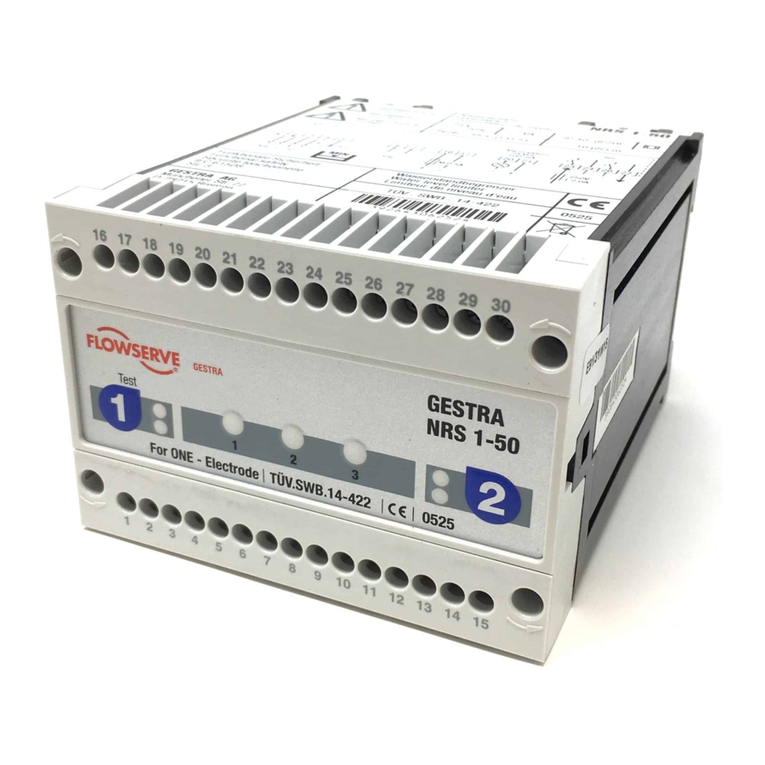
GESTRA
GESTRA NRS 1-50 User manual
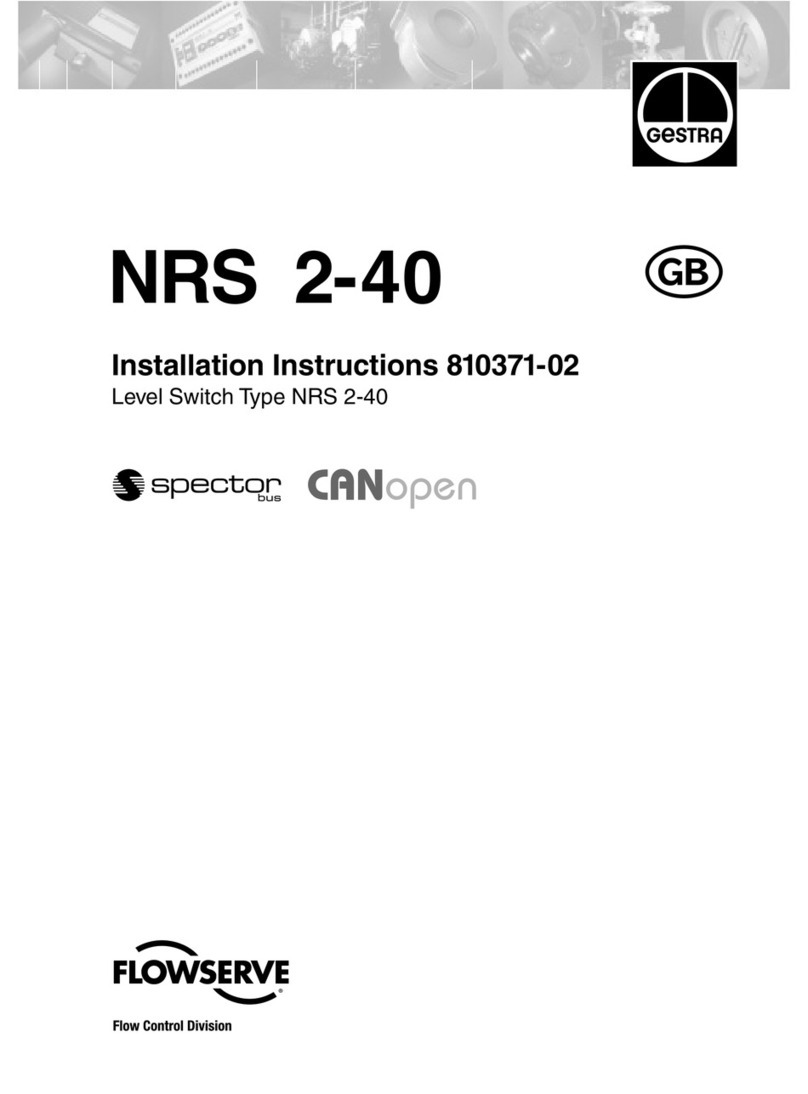
GESTRA
GESTRA NRS 2-40 User manual
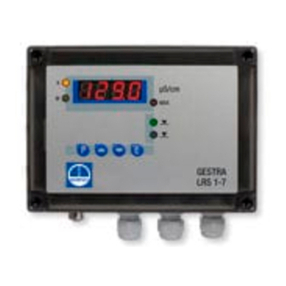
GESTRA
GESTRA LRS 1-7 Manual
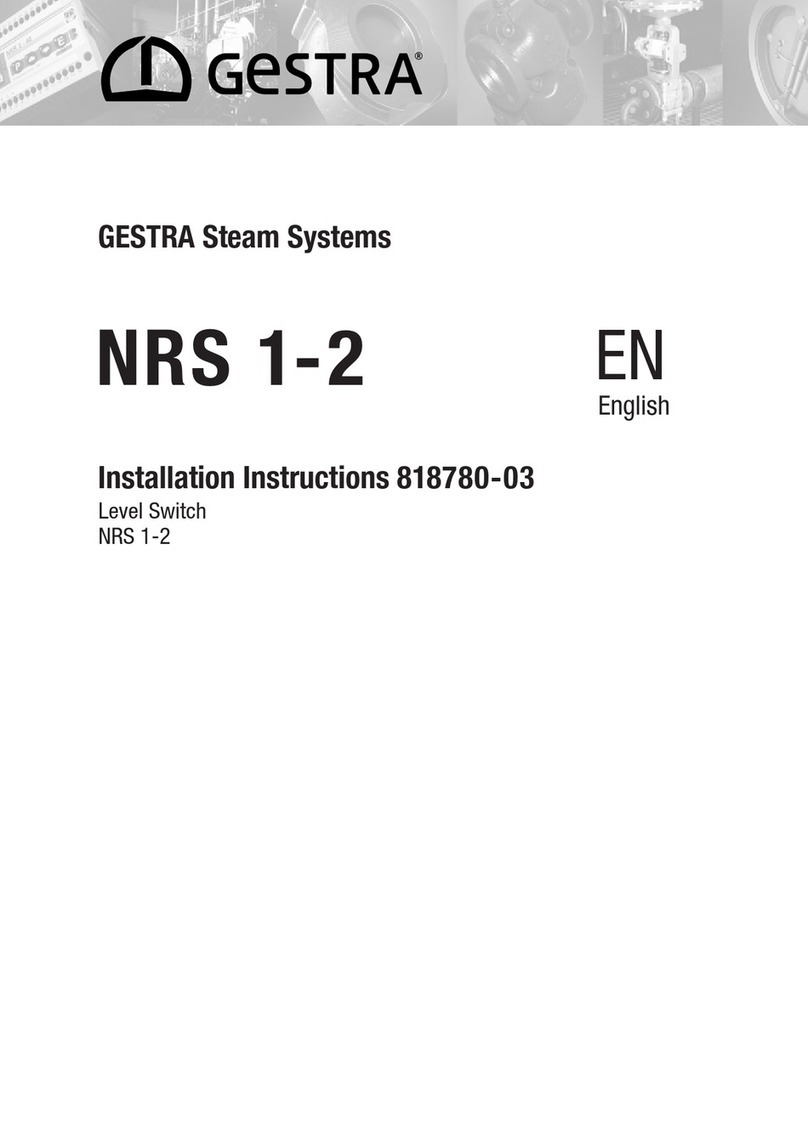
GESTRA
GESTRA NRS 1-2 User manual

GESTRA
GESTRA LRS 1-50 User manual
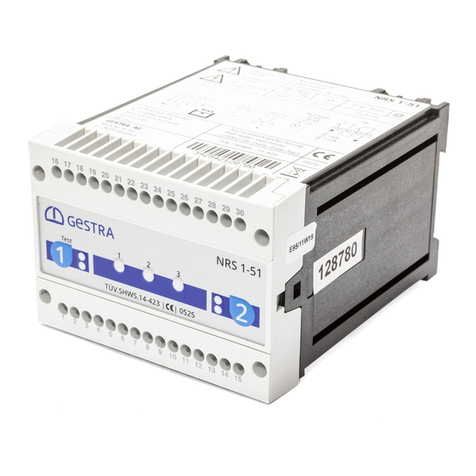
GESTRA
GESTRA NRS 1-51 User manual

GESTRA
GESTRA NRS 1-50 Series User manual
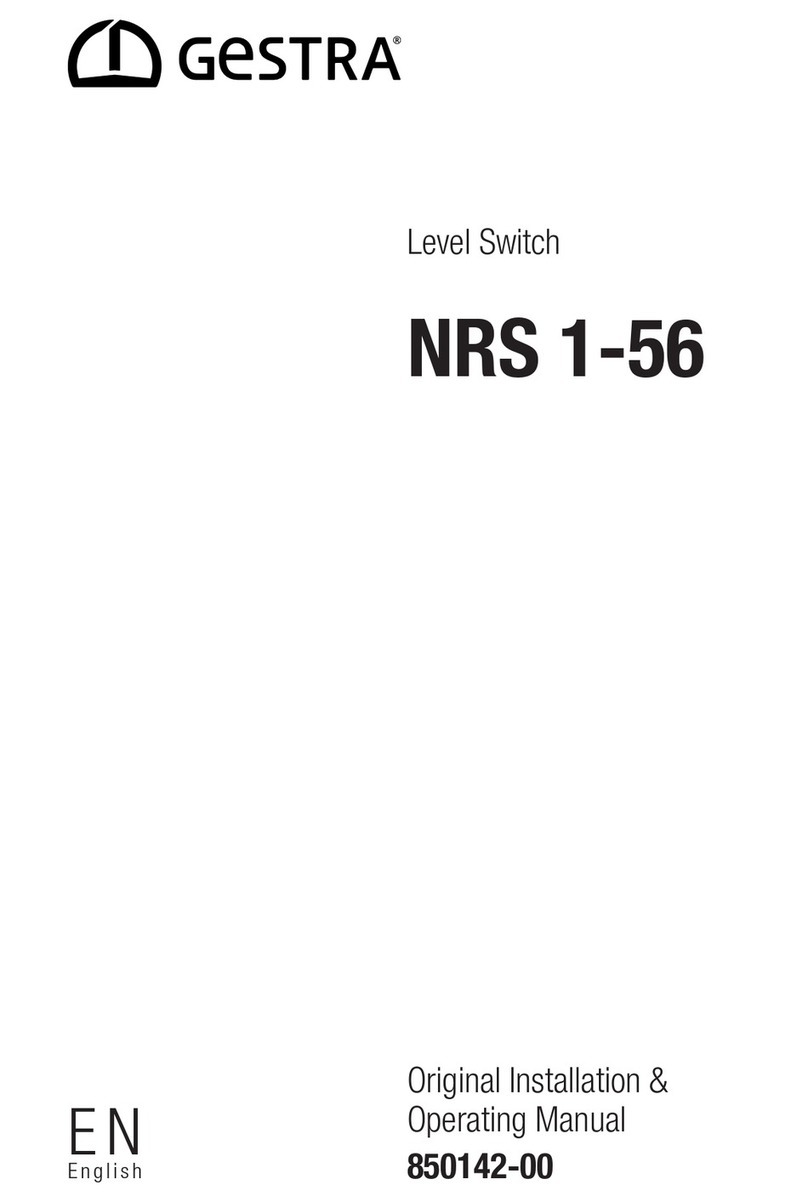
GESTRA
GESTRA NRS 1-56 User manual
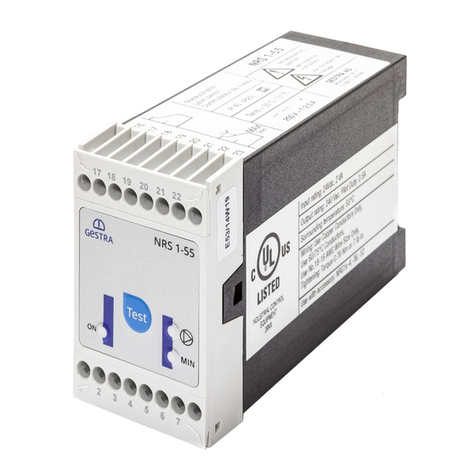
GESTRA
GESTRA NRS 1-55 User manual
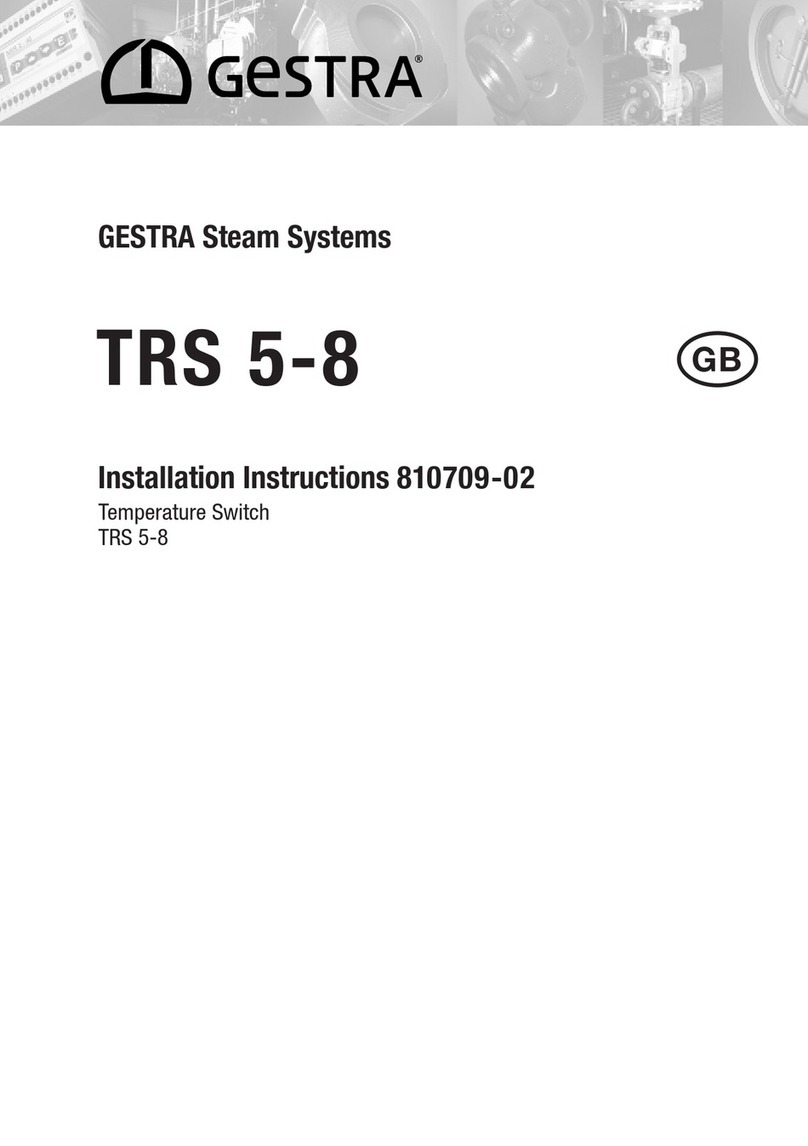
GESTRA
GESTRA TRS 5-8 User manual
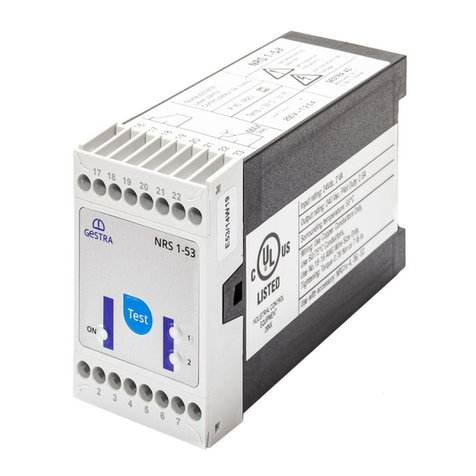
GESTRA
GESTRA NRS 1-53 User manual

